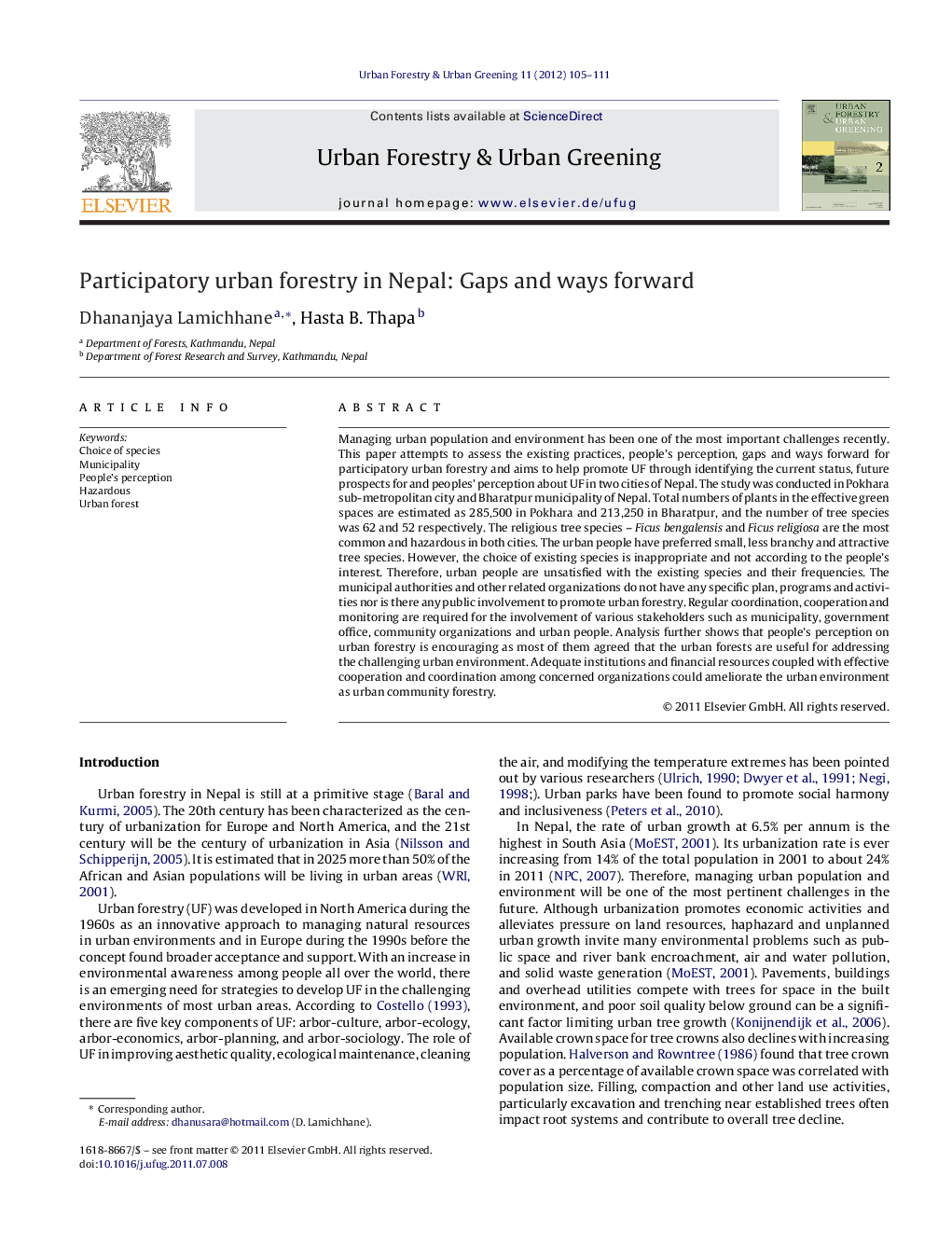| Article ID | Journal | Published Year | Pages | File Type |
|---|---|---|---|---|
| 94249 | Urban Forestry & Urban Greening | 2012 | 7 Pages |
Managing urban population and environment has been one of the most important challenges recently. This paper attempts to assess the existing practices, people's perception, gaps and ways forward for participatory urban forestry and aims to help promote UF through identifying the current status, future prospects for and peoples’ perception about UF in two cities of Nepal. The study was conducted in Pokhara sub-metropolitan city and Bharatpur municipality of Nepal. Total numbers of plants in the effective green spaces are estimated as 285,500 in Pokhara and 213,250 in Bharatpur, and the number of tree species was 62 and 52 respectively. The religious tree species – Ficus bengalensis and Ficus religiosa are the most common and hazardous in both cities. The urban people have preferred small, less branchy and attractive tree species. However, the choice of existing species is inappropriate and not according to the people's interest. Therefore, urban people are unsatisfied with the existing species and their frequencies. The municipal authorities and other related organizations do not have any specific plan, programs and activities nor is there any public involvement to promote urban forestry. Regular coordination, cooperation and monitoring are required for the involvement of various stakeholders such as municipality, government office, community organizations and urban people. Analysis further shows that people's perception on urban forestry is encouraging as most of them agreed that the urban forests are useful for addressing the challenging urban environment. Adequate institutions and financial resources coupled with effective cooperation and coordination among concerned organizations could ameliorate the urban environment as urban community forestry.
